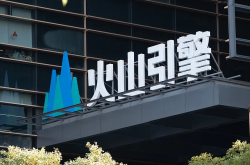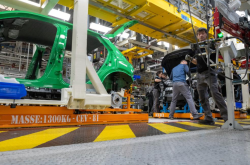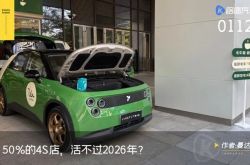Tencent Games: Pioneering the Future with AI
![]() 04/27 2025
04/27 2025
![]() 540
540

Tencent Games' strategic deployment indicates that AI-driven changes in gaming are already underway, albeit with limited involvement from Tencent's in-house Hunyuan Large Model.
Author | Zhao Weiwei
Social networking and gaming are Tencent's twin pillars, and AI is revolutionizing both domains.
The transformation in social networking products is evident. Following an extensive marketing campaign, Tencent's "Yuanbao" APP became available as a WeChat friend in mid-April, enabling users to engage in AI Q&A directly within the chat interface. This marks the official entry of Yuanbao, Tencent's flagship AI product, through WeChat.
In contrast, AI's impact on Tencent's game portfolio is a longer-term prospect.
At the SPARK2025 Tencent Games Conference, updates on 46 game products were unveiled, categorized into production, publishing, and investment sections, reflecting Tencent Games' current layout. Highlights included the announcement of the animated series premiere of the popular King of Glory hero Kai on May 31, the launch of the mobile game Delta Force, and the reveal of the release date for the domestic 3A masterpiece Shadow Blade Zero this year.
The only mention of AI large models at the conference pertained to "Game for Peace," a battle royale game launched six years ago with a daily active user base of 80 million.
In February this year, Game for Peace became Tencent's first mobile game to integrate the DeepSeek large model, enabling players to converse with the digital character Jilly for weapon combination recommendations, tactical strategy tutorials, and other support, albeit through relatively basic interactions.
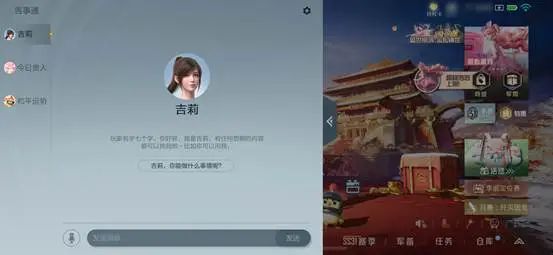
At SPARK2025, Game for Peace showcased enhanced capabilities in integrating AI large models, evolving Jilly into a commandable AI teammate. Players can now issue voice commands such as "Give me some 5.56MM bullets," to which the AI teammate responds and executes, saying, "I have extras, I'll bring them to you right away."
In fact, the interaction-level integration of AI large models with games, as exemplified by Game for Peace, is merely the tip of the iceberg.
On one hand, AI is transforming the gaming industry by offering new gameplay experiences through AI teammates and intelligent NPCs, providing players with more diverse gaming experiences. On the other hand, AI enhances game development efficiency in planning and art, for instance, by using intelligent development tools for automated content generation and accelerating the construction of data systems in operations.
Tencent Games' strategic deployment indicates that AI-driven changes in gaming are already underway, albeit with limited involvement from Tencent's in-house Hunyuan Large Model.
1: Morebox Takes the Lead, Lightspeed Executes First
While WeChat embodies the integration of Tencent's AI and social networking, among Tencent Games' vast product library, which one represents AI+gaming?
In fact, even before Game for Peace integrated DeepSeek, Tencent's PC game Dark Zone Breakout had already developed AI teammates. Both games belong to the shooter genre, but Dark Zone Breakout is developed by Tencent's Morebox Studio, while Game for Peace is developed by Tencent's Lightspeed & Quantum Studios.
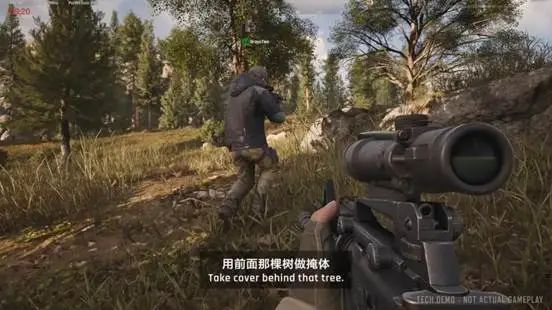
In August 2024, Dark Zone Breakout's AI teammate F.A.C.U.L. was showcased at the Gamescom in Cologne, Germany. At that time, DeepSeek had yet to gain popularity, but Dark Zone Breakout had already adopted advanced generative AI technologies like large language models, claiming to be "the world's first first-person shooter where players can interact with AI through voice."
In a six-minute demo video of Dark Zone Breakout, players engage in real-time voice interactions with AI teammates, issuing complex tactical commands that the AI seamlessly executes. The AI also possesses environmental awareness and provides real-time, flexible feedback using AI voice. For instance, after the player knocks down an enemy and says, "Go loot the enemy's bag," the AI teammate responds, "No, the loot belongs to you only."
The true integration of AI+gaming is a lengthy and complex process, as evidenced by the dozen-plus patented technologies behind Dark Zone Breakout's AI functionalities.
Liao Shiyang, the AI project leader at Tencent's Morebox Studio, and his team, with Tencent Technology Co., Ltd. as the applicant, filed patents such as "Control Method, Apparatus, Device, Medium, and Program Product for AI Virtual Objects" as early as January 2023, before the launch of Tencent's Hunyuan Large Model. In August 2024, Liao Shiyang's team applied for patents like "Broadcast Method, Apparatus, Device Medium, and Product for Non-Player Characters."
Dark Zone Breakout has demonstrated self-developed capabilities in integrating AI multimodal large language models with core gameplay mechanics. This year, it represented Tencent Games at the Game Developers Conference (GDC) in San Francisco, USA. However, this immersive and hardcore experience is still in the testing demo phase.
The PC version of Dark Zone Breakout officially launched on April 29, but the official announcement did not mention the AI teammate F.A.C.U.L. Tencent Games sources revealed that the AI teammate functionality is expected to be released in the second half of this year. Meanwhile, the AI teammate in Game for Peace is already undergoing grayscale testing.
Why could Lightspeed & Quantum Studios implement AI teammates before Morebox Studio?
One possible reason is that Game for Peace leveraged external support. The voice technology solution for the AI teammates comes from GVoice, part of Tencent Games' public R&D and operations system, while the AI large model capabilities stem from Tencent's TEG Technology and Engineering Group. Of course, the more crucial factor is DeepSeek, enabling the AI teammates to understand players' tactical intentions and respond to voice commands.
It's worth noting that Game for Peace currently does not emphasize Tencent's Hunyuan Large Model much, focusing more on DeepSeek.
Speed does not necessarily equate to quality. Judging by the current interaction effects of AI teammates, Game for Peace lags behind Dark Zone Breakout in richness. Insiders revealed that this functionality is not as crucial for Game for Peace, and the PC version of Dark Zone Breakout is far more complex than the mobile version.
In summary, within Tencent Games' internal AI competition, although Dark Zone Breakout initiated AI research and development earlier, Game for Peace achieved faster implementation through external technology collaboration. Morebox Studio aimed first, but Lightspeed & Quantum Studios executed first.
2: Transforming Games? A Little Patience, Please
Game for Peace and Dark Zone Breakout represent Tencent Games' internal stance towards AI. Now, considering Tencent's broader context, can Tencent's Hunyuan Large Model, especially its latest 3D generative large model, be applied in gaming?
The direction is promising, but the impact will take time to materialize.
In January this year, Tencent launched the upgraded version 2.0 of the Hunyuan open-source 3D generative large model. The self-developed 3D AI creation engine was also upgraded and opened to C-end users. In April, the Hunyuan 3D generative large model was upgraded from version 2.0 to 2.5, marking a rapid pace of evolution.
At that time, Hunyuan clearly stated that the 3D generative model had begun to be applied in scenarios such as game 3D asset generation, meeting standards like geometric wiring rationality, texture accuracy, and bone skinning rationality, positioning itself as "the industry's first one-stop 3D content AI creation platform."

Its usage is straightforward. The official documentation on using Tencent Hunyuan's 3D AI creation engine mentions that Hunyuan 3D AI supports uploading images and generating 3D mini-game videos based on personal avatars, creating exclusive IP game character experiences.
In the 3D generation community organized by Hunyuan, many users discussed the efficacy of the AI creation engine, often directed there from Hunyuan's live streams. However, their actual experiences differed significantly from the official demonstrations. Some users believed that Hunyuan's 3D AI creation engine had a relatively limited number of GPUs in the backend, suggesting, "Let everyone try it out first. When the number of users increases, they will probably expand capacity."
On the path of opening up to non-professional users, the Hunyuan Large Model is more aggressive than Google's Genie 2.
In December last year, Google released the new-generation world model Genie 2, where users can generate an interactive 3D game world based on simple prompts or images using a single prompt image. It employs video diffusion technology, bringing new possibilities to game development, particularly in embodied agent training and interactive experience prototyping. However, Genie 2 is still in its nascent stages and has not been widely opened up to C-end users.
In fact, within Tencent Games' internal development, the game AI engine GiiNEX receives more attention than Hunyuan AI 3D.
GiiNEX, an AI game engine self-developed by Tencent AI Lab, is already used in games like Star Dream. It provides players with a series of in-game UGC level design tools. GiiNEX also aids King of Glory in creating an AI Coaching artificial intelligence tutoring solution, combining LLM large language models and TTS technology to create a personalized voice teaching "game coach" for players.
The core of the AI engine GiiNEX lies in leveraging generative AI technologies like large models to provide content generation during development and operation phases, including 2D artwork, 3D models, storylines, dialogues, levels, music, promotional materials, etc., helping game developers enhance the efficiency of high-quality content creation. For instance, the generation of a single building is 50 times more efficient than traditional manual construction.
In addition to scene creation and content generation, AI is extensively used in Tencent Games' data management.
In March this year, Tencent Games' data team published the book "Large Model Engineering: AI-Driven Data System." The authors, Zhang Kai, Si Shuqiang, Liu Yan, Zhang Yu, Dai Shifeng, Xie Sifa, and Li Feihong, are all senior and expert engineers at Tencent. The book showcases Tencent Games' practical experience and technical methodology in data work, explaining how to leverage large model technologies to create an efficient data asset system in game business analysis scenarios, helping business personnel acquire data and make decisions more swiftly. The core focus remains on AI enhancing game business efficiency.
Completed in October 2024, this book can be seen as Tencent Games' first dedicated external output of AI methodology in data. At that time, DeepSeek had yet to attract widespread attention, so the book only mentioned Tencent's Hunyuan Large Model twice, compared to over 30 mentions of OpenAI.
It's evident that within Tencent Games' vast business system, AI has long been pervasive, whether enhancing developer efficiency or providing personalized experiences for players. Tencent Games' exploration of AI technology has always been at the forefront of the industry, involving various Tencent game divisions, Tencent AI Lab, and external DeepSeek. However, Tencent's in-house Hunyuan Large Model currently holds a lower priority.
Faced with the competitive barriers within Tencent Games, the Hunyuan Large Model's biggest market may lie with external small and medium-sized teams and challengers.
Editor | Chen Qiulin

